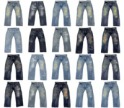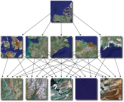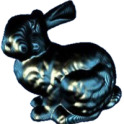Optimizing Continuity in Multiscale Imagery
Charles Han and Hugues HoppeSIGGRAPH Asia 2010
[Project] [Paper]
Multiscale imagery often merges several sources with differing
appearance. For instance, Internet-based maps combine satellite and
aerial photography. Zooming within these maps may reveal jarring
transitions. We present a scheme that creates a visually smooth mipmap
pyramid from stitched imagery at several scales. The scheme involves
two new techniques. The first, structure transfer, is a nonlinear
operator that combines the detail of one image with the local
appearance of another. We use this operator to inject detail from the
fine image into the coarse one while retaining color consistency. The
improved structural similarity greatly reduces inter-level ghosting
artifacts. The second, clipped Laplacian blending, is an efficient
construction to minimize blur when creating intermediate levels. It
considers the sum of all inter-level image differences within the
pyramid. We demonstrate continuous zooming of map imagery from space
to ground level.




